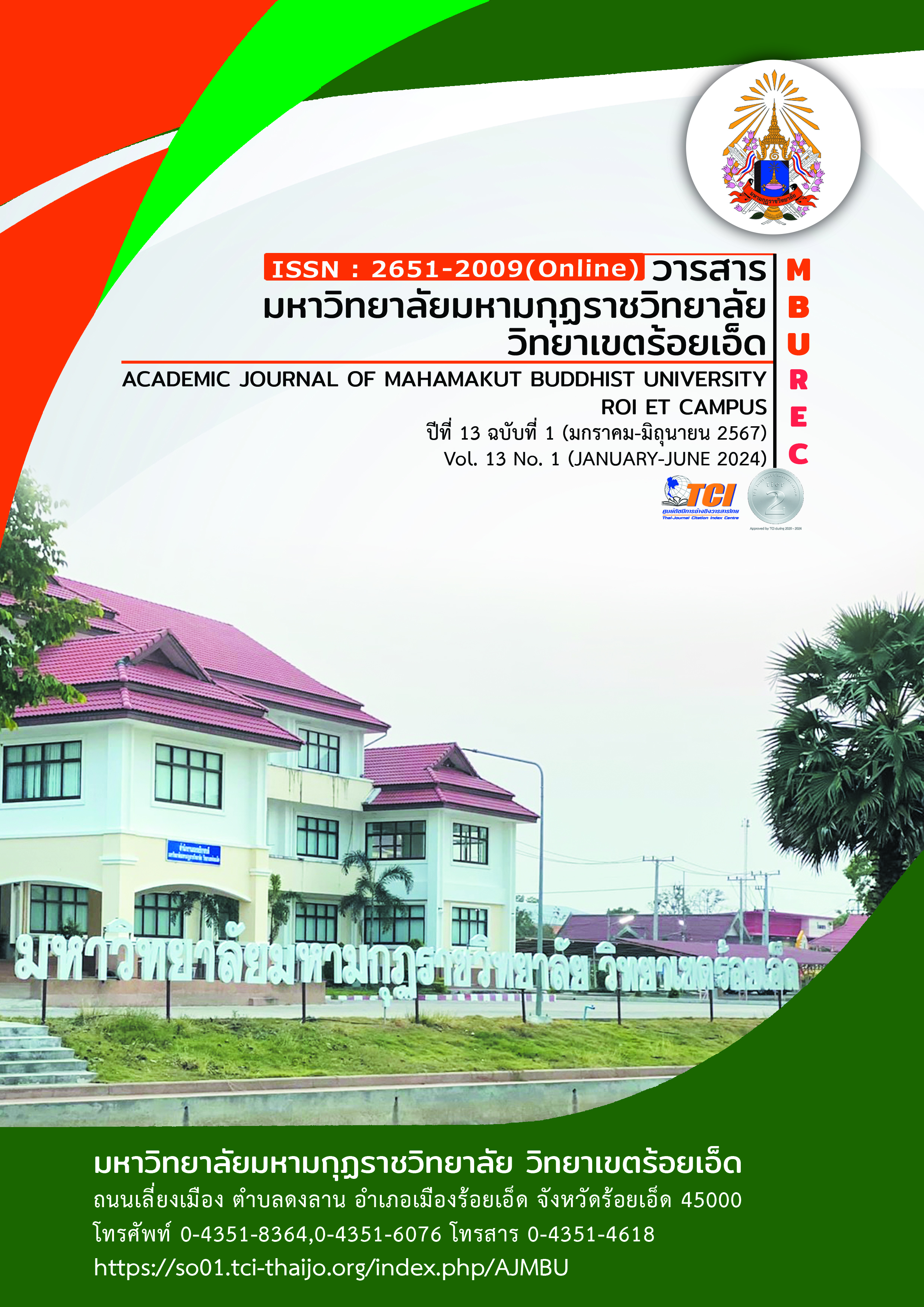THE DEVELOPMENT OF A LEARNING AND INNOVATION SKILLS SCALE IN THE 21st CENTURY FOR PRATHOMSUKSR 6 STUDENTS UNDER THE UDON THANI PRIMARY EDUCATIONAL SERVICE ARER OFFICE 3
Main Article Content
Abstract
This research has the research objectives: 1) to create and determine the quality of content validity, discriminatory power, and reliability of the learning and innovation skills measure in the 21st century for Grade 6 students under the Udon Thani Primary Educational Service Area Office, Area 3 2) To create normal criteria (Norm) of the learning skills and innovation test in the 21st century for Grade 6 students under Udon Thani Primary Educational Service Area Office 3 3) To create a manual to measure learning and innovation skills in the 21st century for 6th grade primary school students. The sample group used in this research were primary school students. Year 6 study under the Udon Thani Primary Educational Service Area Office, Area 3, academic year 2023, totaling 355 students, obtained by multi-stage sampling (Multi-stage Sampling). The tool was created as a measure of learning and innovation skills in the 21st Century is a 5-level rating scale with 43 items that have been examined for quality in terms of validity, discriminatory power, and confidence. and create normal criteria in the form of normalized T-scores
The results of the research found that 1) The 21st Century Learning and Innovation Skills Test for Grade 6 students is a 5-level rating scale consisting of 3 components: creative thinking and innovation, 12 items, thinking in There are 22 items of judgment and problem solving, 9 items of communication and cooperation, a total of 43 items. The quality of the measure is content validity. The definition of learning and innovation skills in the 21st century has a value between 0.60 - 1.00. The content validity of the learning and innovation skills measure in the 21st century has a value between 0.60 - 1.00. The discriminatory power of all 3 components. has a value of 0.40. The results of the entire confidence analysis have a value of 0.95, which is at a high level. The component weights of all observed variables are positive. which has a scale ranging from 0.41 - 0.75 2) Normal criteria for the learning and innovation measure in the 21st century, creativity and innovation, T normal, has a value between T22 -T74, critical thinking and problem solving, T normal. Has a value between T42 - T57 in communication and cooperation. T Normal has a value between T33 - T65. And the 21st Century Learning and Innovation Skills Test for Grade 6 students, both versions, T Normal has a value between T21. -T66 3) Results of creating a manual to measure learning and innovation skills in the 21st century.
Article Details

This work is licensed under a Creative Commons Attribution-NonCommercial-NoDerivatives 4.0 International License.
References
กระทรวงศึกษาธิการ. (2560). แนวทางการดำเนินงานโครงการสถานศึกษาน้อมนำศาสตร์พระราชา สู่การพัฒนาอย่างยั่งยืน กระทรวงศึกษาธิการ. กรุงเทพมหานคร : สำนักส่งเสริมกิจการศึกษา.
กัลยา สร้อยสิงห์. (2563). ทักษะการเรียนรู้และนวัตกรรม: คุณลักษณะสำคัญของพลโลกในยุคเศรฐกิจที่ขับเคลื่อนด้วยนวัตกรรม. วารสารมนุษย์ศาสตร์และสังคมศาสตร์มหาวิทยาลัยธนบุรี. 15(3). 166-170.
จริยา พิชัยคำ. (2559). ทักษะการเรียนรู้และนวัตกรรมพัฒนาได้ด้วยการจัดการเรียนรู้แบบโครงงานเป็นฐาน. วารสารวิชาการมหาวิทยาลัยราชภัฏอุตรดิตถ์. 11(1). 3-6.
ทิศนา แขมมณี. (2560). ศาสตร์การสอน: องค์ความรู้เพื่อการจัดกระบวนการเรียนรู้ที่มีประสิทธิภาพ. พิมพ์ครั้งที่ 8. กรุงเทพมหานคร : จุฬาลงกรณ์มหาวิทยาลัย.
ปณิชา ชัยกุลภัทรโชติ. (2563). การพัฒนาแบบวัดทักษะในศตวรรษที่ 21 ด้านการเรียนรู้และนวัตกรรมของนักเรียนชั้นประถมศึกษา. สารนิพนธ์ปริญญาการศึกษามหาบัณฑิต สาขาวิชาวิจัยและประเมินผลการศึกษา. บัณฑิตวิทยาลัย : มหาวิทยาลัยนเรศวร.
พิชญา ดีมี. (2559). การพัฒนาแนวทางการประเมินทักษะการเรียนรู้และนวัตกรรมของผู้เรียนตามแนวคิดการประเมินผู้เรียนในศตวรรษที่ 21. วิทยานิพนธ์ปริญญาศึกษา สาขาวิจัยและประเมินผลการศึกษา. บัณฑิตวิทยาลัย : มหาวิทยาลัยนเรศวร
ไพศาล วรคํา. (2559). การวิจัยทางการศึกษา. พิมพ์ครั้งที่ 8. มหาสารคาม : ตักสิลาการพิมพ์.
ล้วน สายยศ และ อังคณา สายยศ. (2543). เทคนิคการวิจัยทางการศึกษา. พิมพ์ครั้งที่ 5. กรุงเทพมหานคร : สุวีริยาสาส์น.
สำนักงานเลขาธิการสภาการศึกษา. (2557). รายงานการวิจัยแนวทางการพัฒนาการศึกษาไทยกับการเตรียมความพร้อมศตวรรษที่ 21. กรุงเทพมหานคร : สำนักงานเลขาธิการสภาการศึกษา.
สำเริง บุญเรืองรัตน์ และคณะ (2554). การวัดและประเมินผลการศึกษา เล่ม 2. กรุงเทพมหานคร : สำนักพิมพ์พัฒนาศึกษา.
Davis. (1992). Validity and Reliability in Qualitative Research on Second Language Acquisition and Teaching: Another Researcher Comments. Retrieved 10 June 2022. From https://doi.org/10.2307/3587190
Partnership for 21st Century Skills. (2011). 21st century skills, education & competitiveness. A resource and policy guide. Retrieved 10 June 2022. From http://ww.p21. org/storage/documents/21st_Century_SkilsEducation_ and_Competitiveness_ Guide.pdf
Pinyoanuntapong. (2002). Criterion-referenced evaluation: Concept and method. 2nd ed. Bangkok : Wattana Panit Printing & Publishing.


